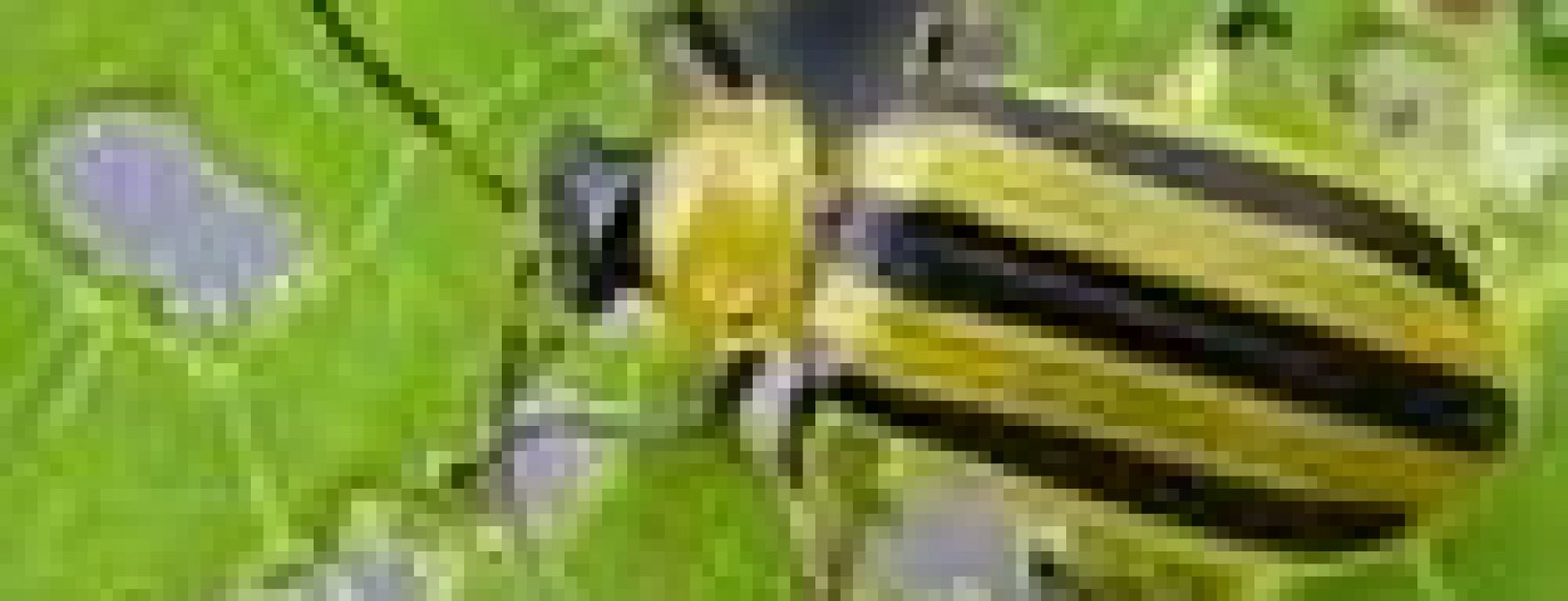Herbivores can stop plants reproducing or even kill them. So can pathogens. How does a plant cope with these natural enemies?
One option is resistance: limiting the extent of damage.
The other option is tolerance: suffering damage, but limiting its impact on fitness. Resistance and tolerance are often considered to be alternative defense strategies for plants.
Cultivated squashes and their relatives suffer both herbivory and pathogen attack. Cucumber beetles are the primary herbivore. These beetles vector the bacteria (Erwinia tracheiphila) that cause bacterial wilt disease — the economically most important disease of cultivated cucurbits in the Eastern US.
In a three year study reported in the American Journal of Botany, Andy Stephenson and collaborators found genetic variation for both resistance and tolerance to beetle damage in populations of wild squashes (Cucurbita pepo ssp texana).
- Leaf damage by cucumber beetles during the seedling, pre-reproductive, and initial stages of flower and fruit production had little effect on reproductive output (pollen, fruit and seed production).
- However, beetle damage that occurred during late July and August, when plants were investing heavily in reproduction, significantly depressed reproductive output. These findings suggest that tolerance to herbivory changes with the ontogenetic stage of the life cycle.
- Plants from families most resistant to the beetles were also more resistant to infection by Erwinia bacteria. The incidence of bacterial wilt disease increased with the amount of leaf damage caused by cucumber beetles.
These results suggest that resistance and tolerance to herbivores cannot be viewed as alternative defense strategies.
Rather, resistance to herbivores also confers resistance to the pathogens they transmit, whereas tolerance to the herbivores does not also confer tolerance to the deadly pathogens vectored by the herbivores.
Written By: Daolin Du, James A. Winsor, Matthew Smith, Andrew DeNicco, & Andrew G. Stephenson
Paper Url: http://www.amjbot.org/cgi/content/abstract/95/1/84
Journal: 95: 84-92
Journal Reference: 95: 84-92
